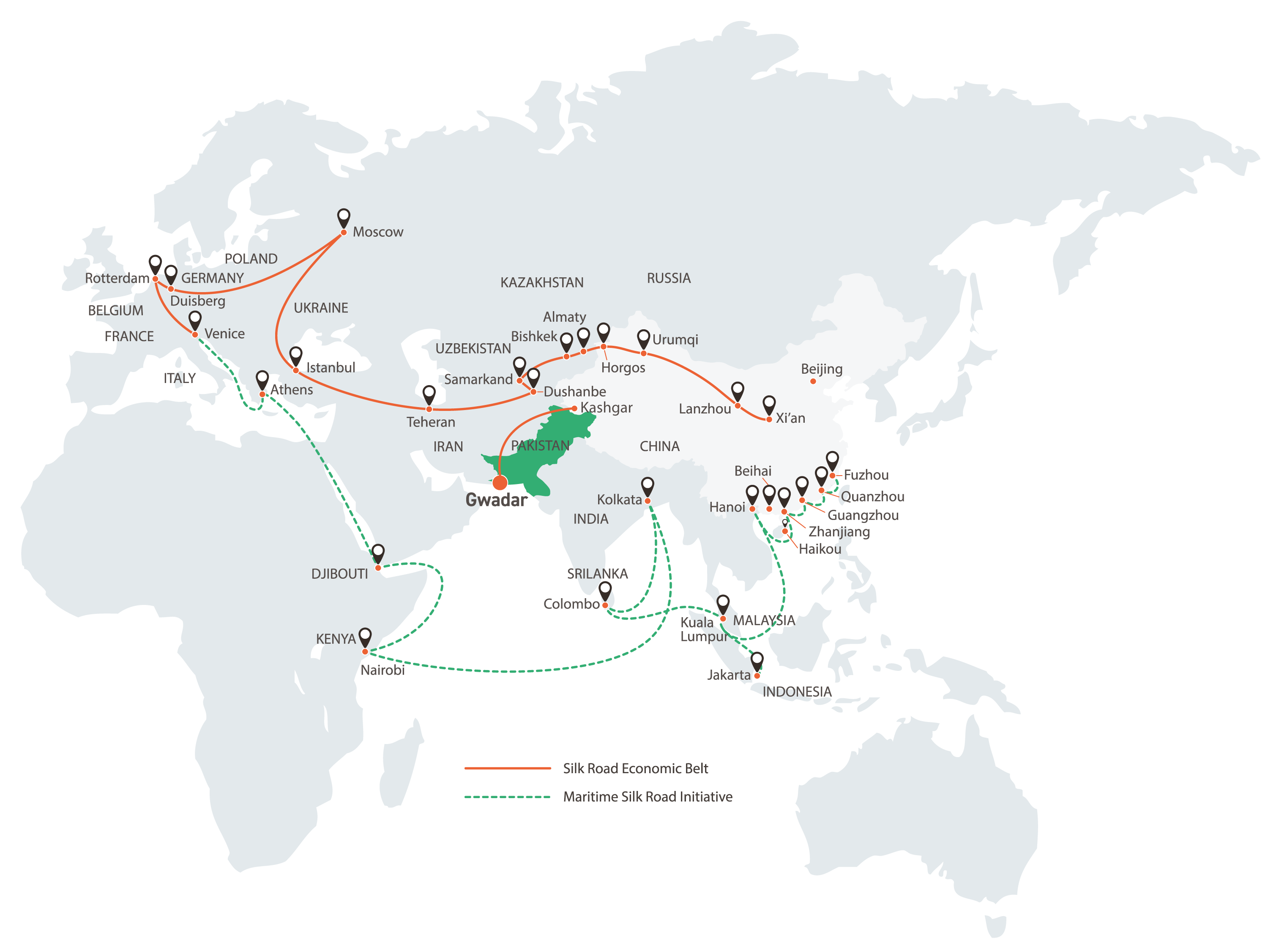The $62 billion China-Pakistan Economic Corridor (CPEC) is a vital component of a much bigger project called the Belt and Road Initiative (BRI).
This mammoth $900 billion venture will, once complete, improve connectivity and cooperation among nearly 80 countries spread across Asia, Africa, and Europe.
Dubbed as the “Project of the Century” by the Chinese authorities, BRI currently involves 78 countries.
The China-Pakistan Economic Corridor (CPEC), which connects South Western China through Pakistan to the Arabia sea, is one of six trading routes which make up what is being referred to as the New Silk Route.
It provides China with an indispensable gateway to the highly-lucrative European, Middle-Eastern and African markets.
This was launched in 2013 to restore the ancient Silk Route that once connected Asia and Europe.
The Silk Route was a historic trade highway which existed for 1500 years from the second century B.C. until the 14th century A.D. It stretched from Asia to the Mediterranean, traversing China, India, Persia, Arabia, Greece, and Italy.
It got its name from the heavy silk trading that took place during that time.
The modern version includes new territories and development initiatives.
The BRI project involves building a huge network of roadways, railways, maritime ports, power grids, oil and gas pipelines, and associated infrastructure projects.
It is being constructed in two phases. The first is called the “Silk Road Economic Belt,” which is primarily land-based and is expected to connect China with Central Asia, Eastern Europe, and Western Europe.
The second is called the “21st Century Maritime Silk Road,” which is sea-based and is expected to link China’s southern coast to the Mediterranean, Africa, South-East Asia, and Central Asia.
The names are confusing as the ‘Belt’ is actually a network of roads, and the ‘Road’ is a sea route.
China has passed several BRI milestones including the signing of hundreds of deals since 2016.
Among them is a new rail service from Beijing to London along the historic route, passing beneath the English Channel to reach London.
The journey lasts between 16 and 18 days.
It travels nearly 7,500 miles and allows freight shippers an alternative to slow but relatively cheap water routes, and fast but relatively expensive air routes.
The BRI contains the following six economic corridors:
The New Eurasian Land Bridge, which connects Western China to Western Russia
The China-Mongolia-Russia Corridor, which connects North China to Eastern Russia via Mongolia
The China-Central Asia-West Asia Corridor, which connects Western China to Turkey via Central and West Asia
The China-Indochina Peninsula Corridor, which connects Southern China to Singapore via Indo-China
The Bangladesh-China-India-Myanmar Corridor, which connects Southern China to India via Bangladesh and Myanmar
The China-Pakistan Economic Corridor, which connects South Western China through Pakistan to Arabia sea routes
CPIC Global are very much at the forefront of the last-named, the China-Pakistan Economic Corridor.
We broker real estate in Gwadar, which sits at the corridor’s most crucial point.
Our portfolio consists of over 10 million sqft of land suitable for residential or commercial purposes.
In due course, Gwadar will become the largest sea port in South Asia.
With every Chinese import and export travelling through Gwadar, its strategic value to the Chinese economy cannot be understated.
Consequently, it is experiencing rapid growth in terms of population, employment opportunities and housing.
Land and property prices are expected to rise significantly in the medium term.
This in turn makes Gwadar an enticing investment opportunity.


